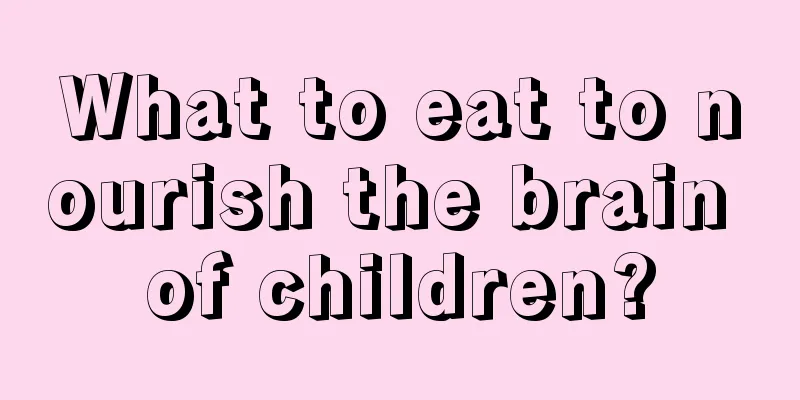What is the incidence of childhood cancer?

|
Tumors may occur in any part of the human body. When it comes to tumor diseases, everyone will be afraid. In fact, tumors in the human body are more complicated and have different classifications, such as benign tumors and malignant tumors. Obviously, the harm of benign tumors is much lower than that of malignant tumors. In short, there are many types of tumor diseases. So what is the approximate incidence of tumors in children nowadays? The incidence of childhood tumors: Malignant tumors have become the second leading cause of death among children, and soft tissue sarcoma has become the fifth leading cause of cancer death among children. In the past five years, the incidence of malignant tumors in urban children in China has increased by 18.8%, much higher than that in developed countries. It is estimated that the number of new cases may reach 4,000 to 5,000 each year. Due to insufficient awareness, misdiagnosis, lack of early screening mechanisms and medical insurance coverage, the "time window" for children's treatment is often missed, and the outpatient misdiagnosis rate for some diseases is as high as 50%. In China, childhood soft tissue sarcoma can be said to be a hidden killer of children that has been neglected. Although childhood soft tissue sarcoma is a malignant tumor, it is by no means an incurable disease. Its therapeutic effect is significantly better than that of adult patients of the same period. After standardized treatment, most patients have no sequelae, and after being cured, they can go to school, work, get married and have children normally. The incidence of soft tissue sarcomas in children is high Soft tissue sarcoma is a malignant tumor that occurs in any soft tissue of the body, accounting for 1% of malignant tumors in adults, but 8-10% of malignant tumors in children. It is one of the most common solid tumors in children. 70% of childhood malignant tumors occur before the age of 3. There are two peak incidence periods for childhood malignant tumors, namely within 3 years old and within 5 years old. Most childhood soft tissue sarcomas are caused by congenital factors. Taking the most common rhabdomyosarcoma as an example, it accounts for 50% of childhood soft tissue malignant tumors. It is extremely malignant, with high metastasis and recurrence, and accounts for 10% of childhood solid malignant tumors. 70% of cases occur in children under 10 years old, with the peak incidence occurring between 2 and 5 years old, accounting for 1/3 of all cases. There are also cases in newborns, with an equal ratio of males to females. Most people have not heard of these terrible diseases, and even many pediatricians have never seen such cases. Because the symptoms of soft tissue sarcoma in children are mostly painless tumors, fever, inflammation, and abdominal pain, they are not even considered at the time of diagnosis, resulting in widespread metastasis by the time the final diagnosis is confirmed. In fact, children can develop cancer not only at all ages, but also in all systems of the body. Treatment of soft tissue sarcoma requires multidisciplinary collaboration Soft tissue sarcoma is still a rare disease in specialized hospitals such as cancer hospitals or children's hospitals, and it is even more difficult to attract attention in general hospitals. Most parents of sick children are also faced with a dilemma: if they send their children to the oncology department of a general hospital, they will be faced with a group of doctors who have no pediatric experience; if they send their children to the internal medicine or surgery department of a children's hospital, the doctors are often helpless against malignant tumors, especially metastasis and recurrence. Since soft tissue sarcoma in children may occur in any part of the body, it requires cooperation from multiple departments and is more difficult to treat. Due to professional limitations, children will be referred to the corresponding hospitals for treatment if they encounter special bone tumors, ophthalmological tumors, or head and neck tumors. Secondly, the radiotherapy and chemotherapy for children are quite different from those for adults, and the radiotherapy departments of most hospitals are unwilling to accept pediatric cases. Surgery, chemotherapy, and radiotherapy are currently the main treatment methods for soft tissue sarcoma. Comprehensive treatment including surgery, chemotherapy and radiotherapy is the main principle for the treatment of soft tissue sarcomas that are more sensitive to chemotherapy, such as rhabdomyosarcoma, synovial sarcoma, and Ewing's tumor. For soft tissue sarcomas such as liposarcoma and fibrosarcoma that are poorly sensitive to chemotherapy, the current main treatment is surgery + radiotherapy. Regardless of the type of surgical treatment, the goal is to achieve no residual tumor. |
<<: What to do if your two and a half year old baby has a dry cough
>>: How to check the eyesight of a two-year-old baby
Recommend
What should we pay attention to when babies take calcium gluconate?
For newborn babies, I believe that moms and dads ...
Why does my baby have a fever and hot hands and feet?
If the baby has a fever, parents must be very cau...
Why is the baby's face different in size?
After a newborn is born, the body begins to enter...
What is the cause of anal pain in children? There are several reasons
Both adults and children may have various problem...
Children often take deep breaths unconsciously
Sometimes, when parents are accompanying their ch...
Private care for newborn baby girls
Does a baby girl need to have her private parts c...
What can’t babies eat if they are allergic? Don't touch these foods
The baby's body is relatively fragile and its...
What is the cause of the red bloodshot eyes?
The importance of eyes is self-evident. In daily ...
What to do if a newborn has indigestion after breastfeeding
Breast milk is essential for the growth of newbor...
The reason why the baby's forehead veins are obvious
In the process of raising children, parents are v...
Baby's hands and feet are cold and he has a fever
Colds and fevers are actually very common during ...
Why is the baby's tongue white?
For babies, if there are abnormal physical condit...
Why are children's hands and feet cold?
Children's bodies are not fully developed yet...
What to do if your child coughs at night
There are many reasons why children may cough, bu...
Is it useful to eat steamed apples when babies have diarrhea?
Many friends believe that eating steamed apples i...









